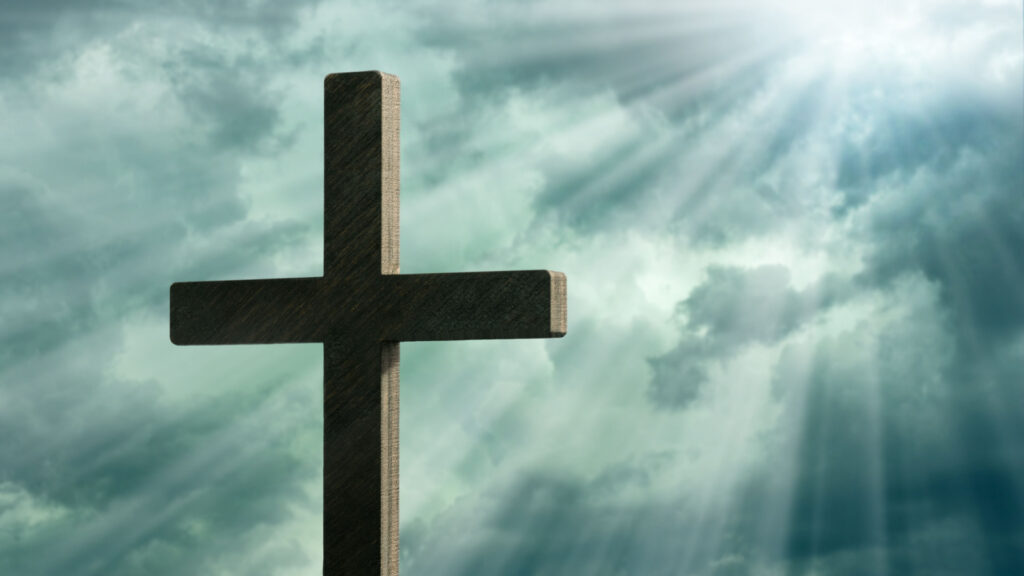Throughout history, symbols have been used to convey deep meanings, messages, and beliefs. With its rich tapestry of stories, characters, and teachings, Christianity is ripe with symbolic representations. Many of these symbols have become so entrenched in our culture that we often forget their original significance. Let’s uncover the ancient and forgotten meanings behind some of the most recognizable Christian symbols.
The Cross: A Transformation from Torture to Redemption

The cross, a universally recognized emblem of Christianity, has a complex history. Originally a Roman implement of brutal execution, it underwent a profound transformation in meaning. By the 4th century CE, Christians had adopted the cross as a powerful symbol of Christ’s sacrifice for humanity’s redemption. This shift from a tool of torture to a symbol of salvation illustrates the profound recontextualization of symbols in religious narratives.
Ichthys: The Jesus Fish as a Covert Christian Emblem
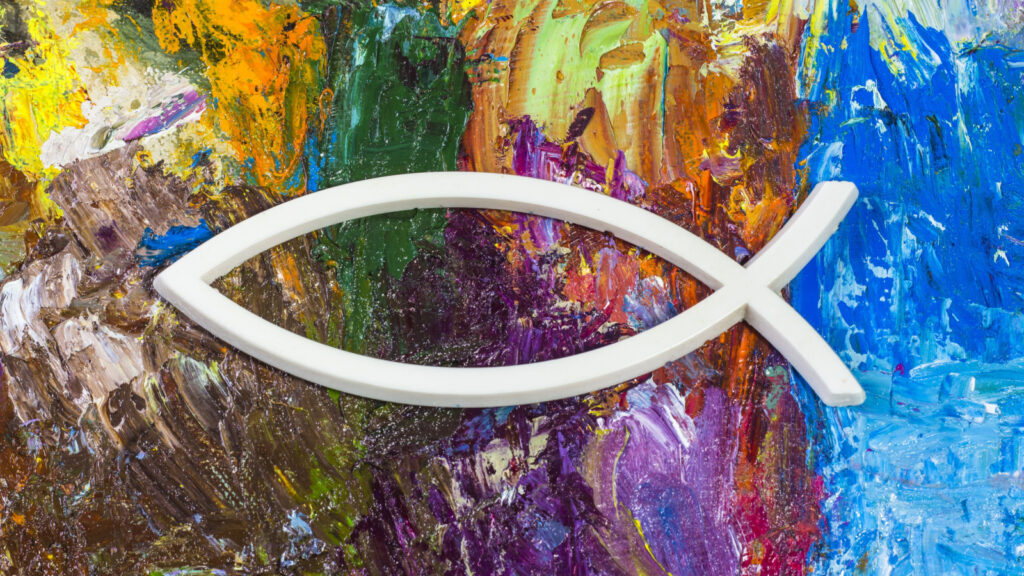
The Ichthys, or fish symbol, played a crucial role for early Christians, especially during times of persecution. This simple icon, representing a fish, was actually an acronym in Greek for “Jesus Christ, Son of God, Savior.” Its discrete nature allowed early Christians to identify each other while keeping their faith concealed from oppressors, showcasing the ingenuity and resilience of early Christian communities.
Alpha and Omega: The Eternal Nature of God
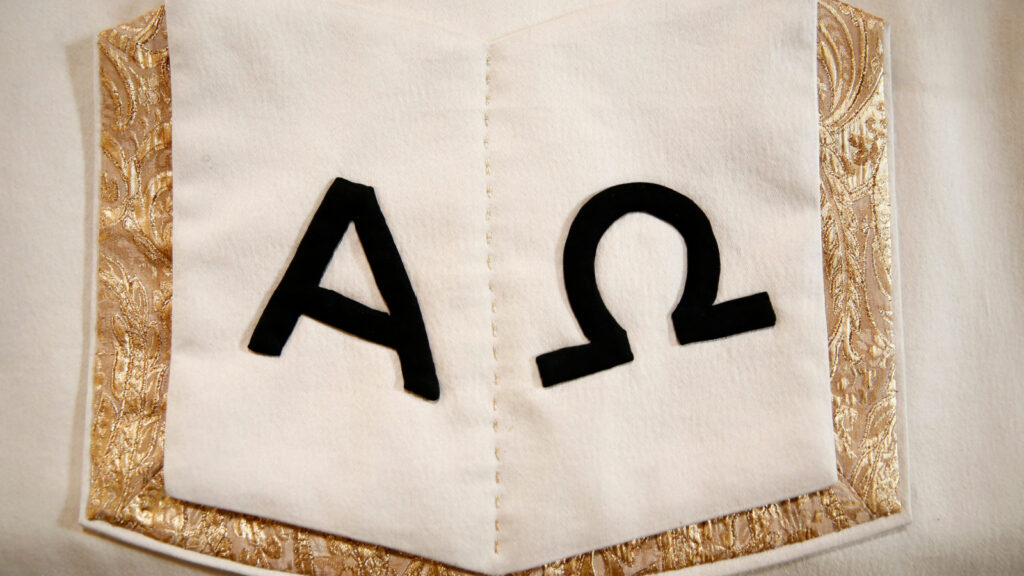
The Alpha and Omega, the first and last letters of the Greek alphabet, appear in Revelation 22:13. They symbolize God’s omnipresence and omnipotence, affirming the belief that God exists beyond the constraints of time, from the beginning to the end of the world. This concept underscores the eternal nature of the divine in Christian theology.
The Dove: Emblem of the Holy Spirit and Divine Peace
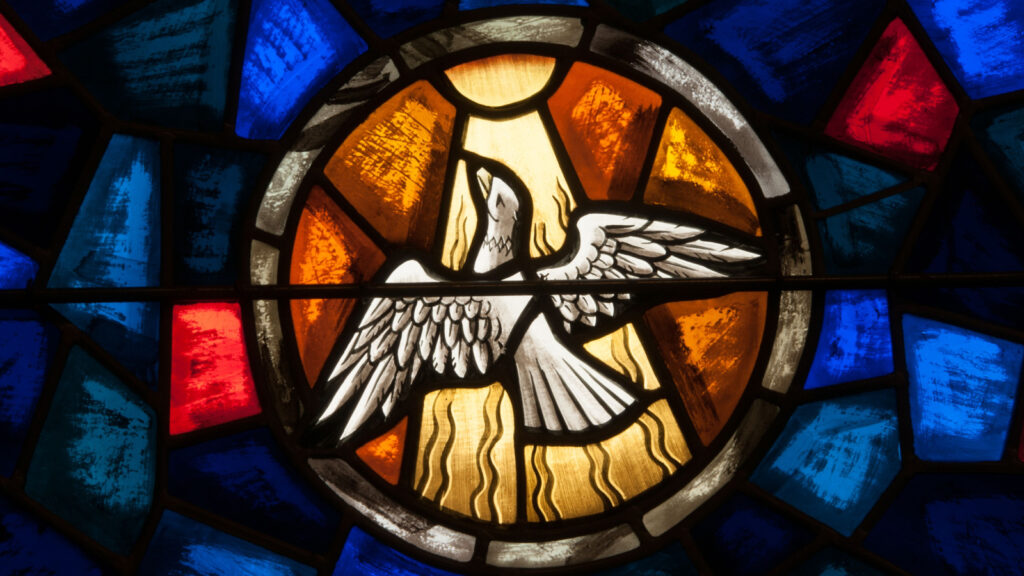
The dove, commonly associated with peace, primarily symbolizes the Holy Spirit in Christianity. This symbol recalls the baptism of Jesus in the Jordan River, where the Holy Spirit is described as descending like a dove. This symbol not only represents peace but also the presence of God in the world, especially in key moments of the Christian narrative.
The Shepherd: Jesus as the Protector and Guide
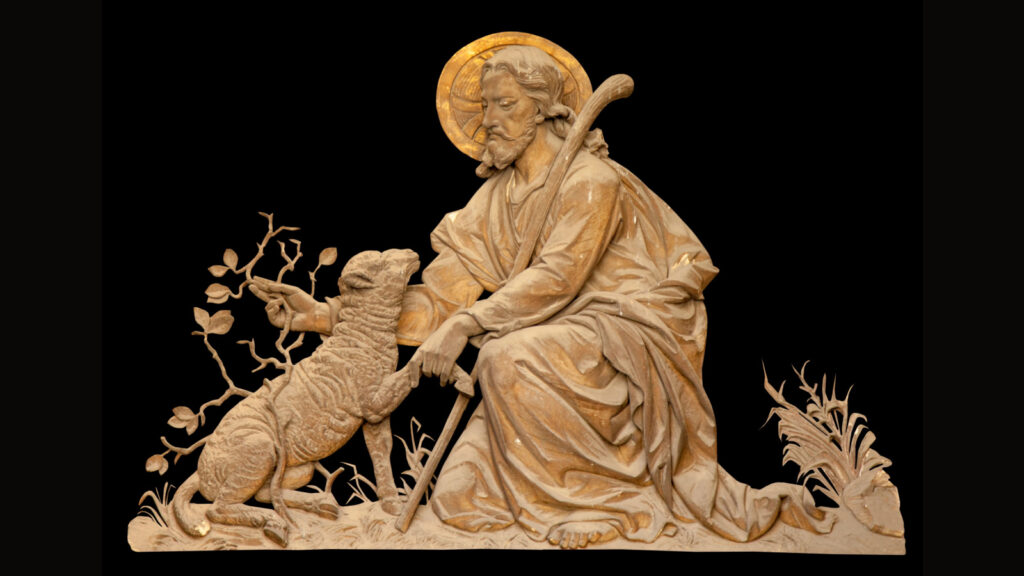
Jesus’s self-identification as the “Good Shepherd” in John 10:11 offers a rich symbolic representation of his role. This metaphor speaks to Jesus’s dedication to guiding, protecting, and sacrificing for humanity, much like a shepherd does for their flock. It encapsulates the nurturing aspect of Jesus’s ministry.
The Lamb: Symbol of Innocence and Sacrificial Love
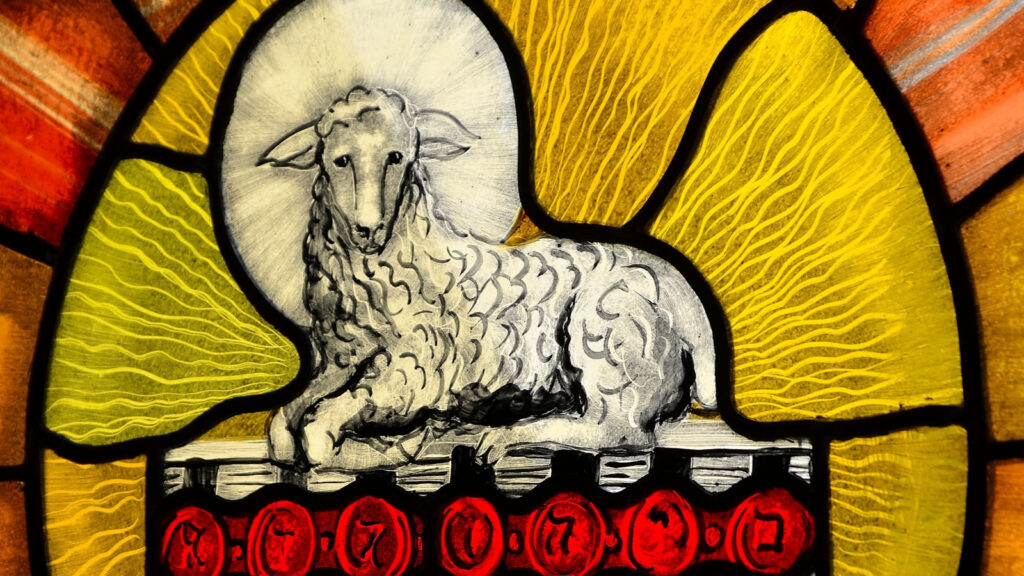
In the Book of Revelation, Jesus is referred to as the “Lamb of God.” This symbolism highlights his innocence, purity, and role as a sacrificial offering for mankind’s sins. The lamb represents the ultimate sacrifice and underscores the theme of redemption central to Christian doctrine.
The Anchor: Steadfast Faith Amidst Adversity
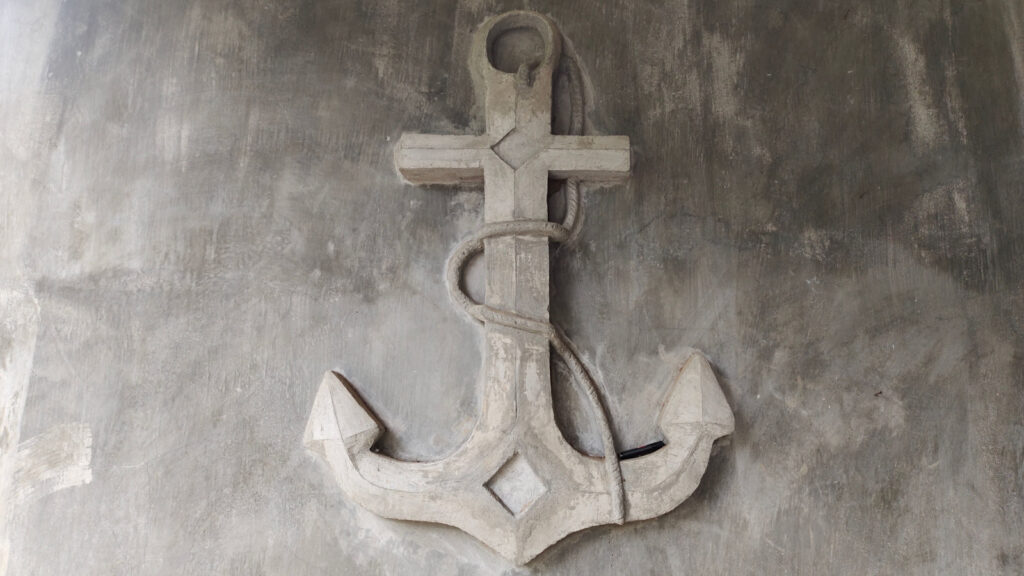
Early Christians used anchors to symbolize hope and stability, offering solace and grounding believers in their faith during times of trial and persecution. The anchor, often found in catacombs and early Christian art, reminds us of the enduring strength and resilience of faith.
Chi-Rho: A Symbol of Divine Endorsement and Victory
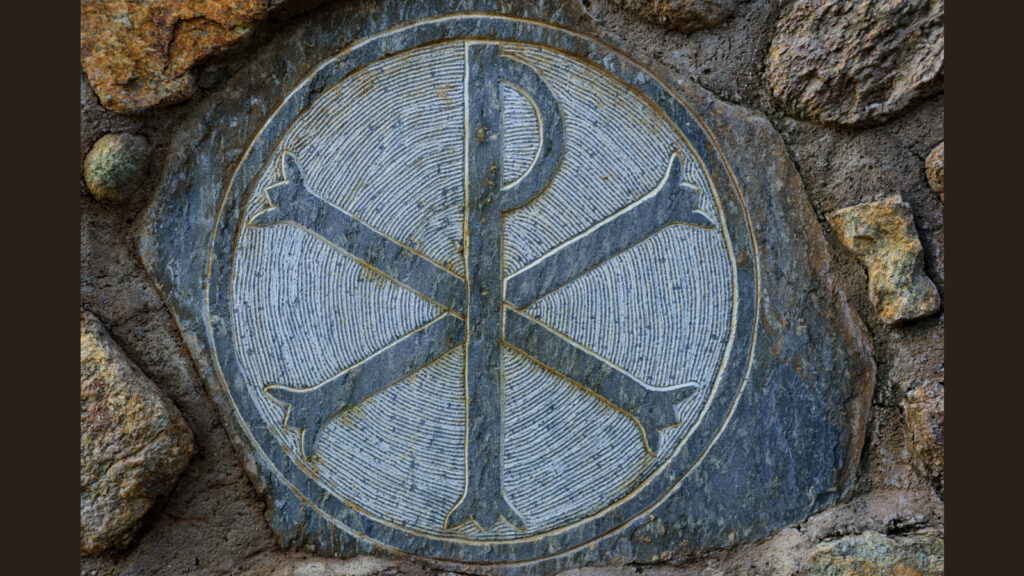
The Chi-Rho, combining the first two Greek letters of “Christ,” became a significant Christian symbol after Emperor Constantine reportedly saw it in a vision before the Battle of Milvian Bridge in 312 CE. This symbol, often seen on battle standards and imperial insignia, signified divine endorsement and victory and marked a pivotal moment in the history of Christianity.
The Pelican: A Medieval Allegory of Christ’s Sacrifice
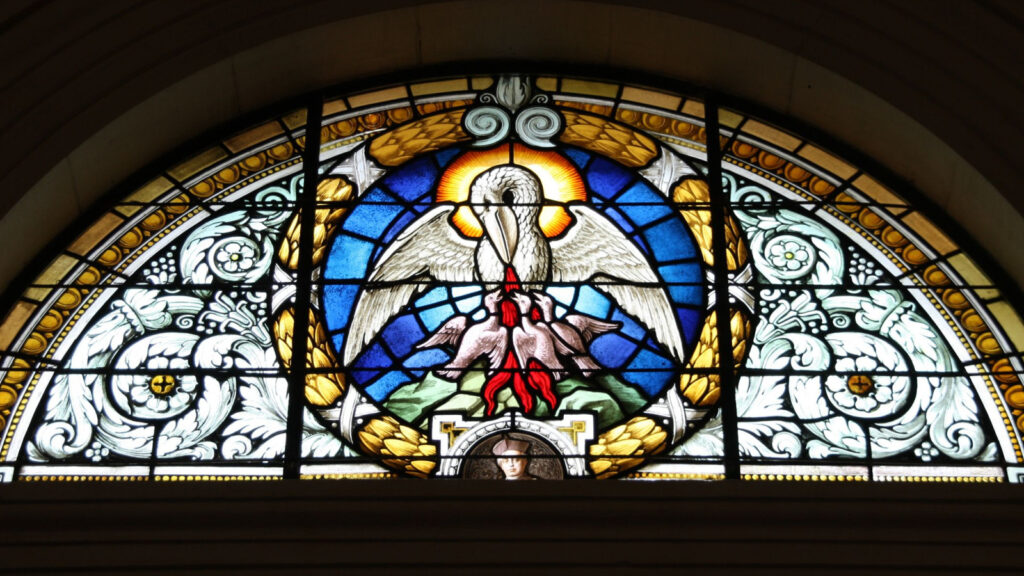
In medieval Christian symbolism, the pelican was believed to feed its young with its own blood, a misconception that led to its adoption as a symbol of Christ’s self-sacrifice for humanity. This allegory reflects the theme of selfless love and redemption in Christian teachings.
The Phoenix: Resurrection and Eternal Life
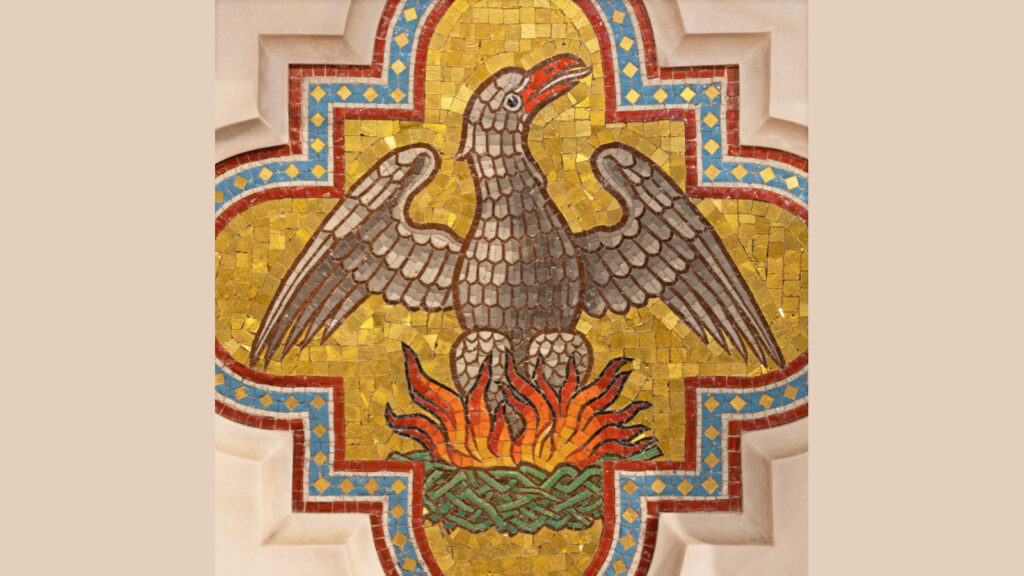
The phoenix, a mythical bird known for rising from its ashes, is a powerful Christian symbol of resurrection, rebirth, and eternal life. It mirrors the story of Christ’s resurrection, reinforcing the central Christian tenet of life triumphing over death.
The Ship: A Symbol of the Church’s Voyage
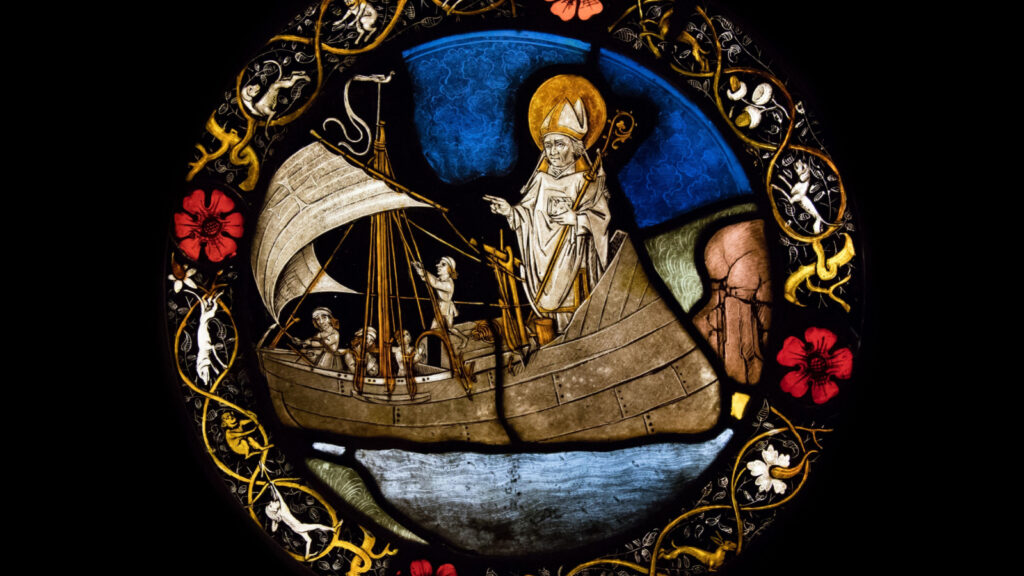
The ship, especially when depicted with a cross-shaped mast, is a profound symbol of the Christian Church. It represents the Church’s journey through the turbulent seas of life, navigating challenges while carrying its believers. This imagery often reminds Christians that, like a ship braving the ocean, their faith community endures and overcomes life’s tumultuous trials, guided by the cross, the ultimate symbol of faith and redemption.
The Triquetra: Emblematic of the Holy Trinity
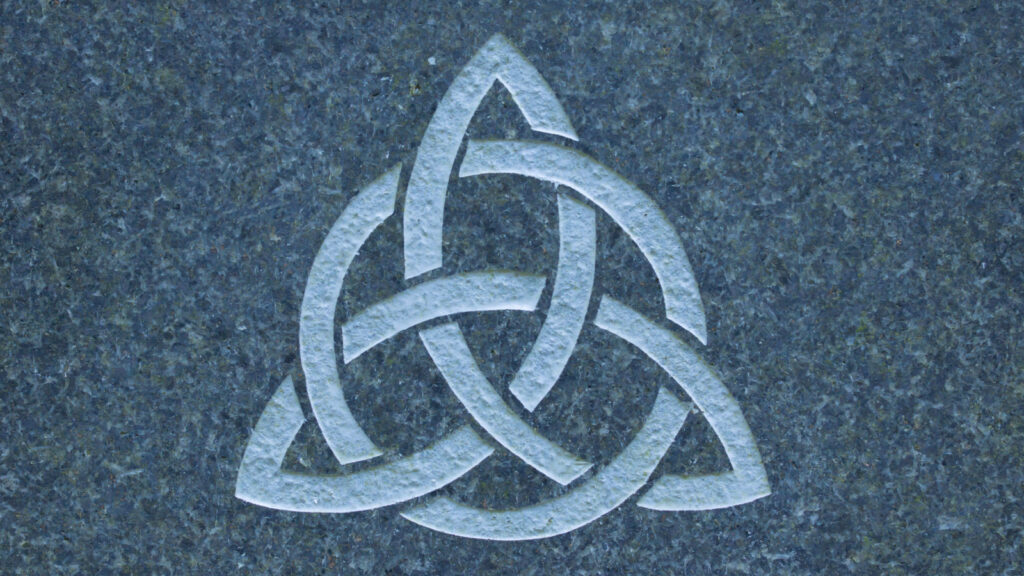
The Triquetra, a Celtic symbol of three interlocking arcs, is a rich representation of the Holy Trinity in Christian belief: the Father, the Son, and the Holy Spirit. Each arc, while distinct, is inseparable from the others, symbolizing the unity and co-equality of the three aspects of God. This ancient symbol has been embraced in Christian art to depict the complex and foundational doctrine of the Trinity.
The Labyrinth: A Metaphor for Spiritual Pilgrimage
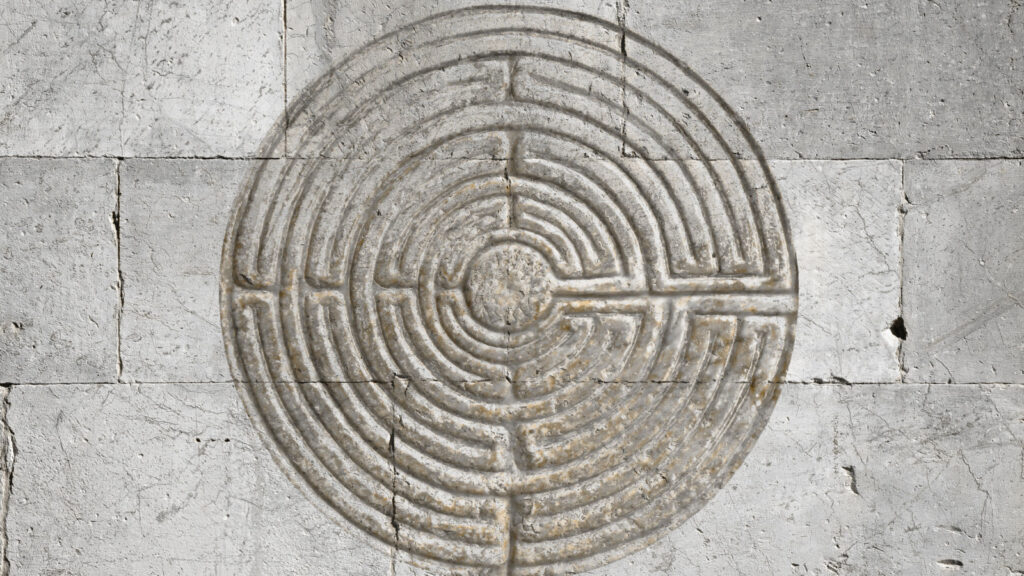
Labyrinths found in medieval churches are symbolic of the Christian journey of faith. These intricate pathways reflect life’s complex and often challenging journey, with its unexpected twists and turns, ultimately leading to the center, symbolizing spiritual enlightenment and union with God. The labyrinth invites contemplation and meditation, embodying the pilgrim’s spiritual quest.
The Peacock: A Christian Symbol of Eternal Life
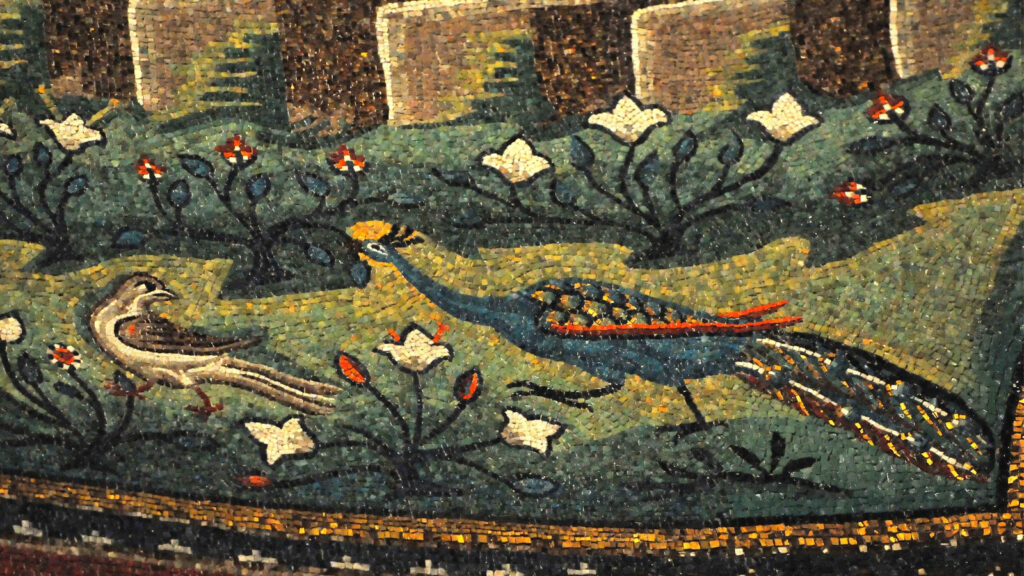
Early Christians adopted the peacock as a symbol of immortality, drawing inspiration from ancient myths that believed the peacock’s flesh did not decay. This belief, combined with the bird’s regal and colorful plumage, made the peacock a fitting symbol for eternal life and the incorruptible soul, central to Christian eschatology.
The Butterfly: Representing Resurrection and Renewal

The metamorphosis of a caterpillar into a butterfly is a powerful Christian symbol of spiritual transformation and resurrection. Just as a caterpillar undergoes a profound change, the butterfly represents the believer’s journey from physical existence to a renewed, spiritual life, echoing the resurrection of Christ and the promise of eternal life.
The Grapes: Symbolizing the Eucharist and Sacrifice
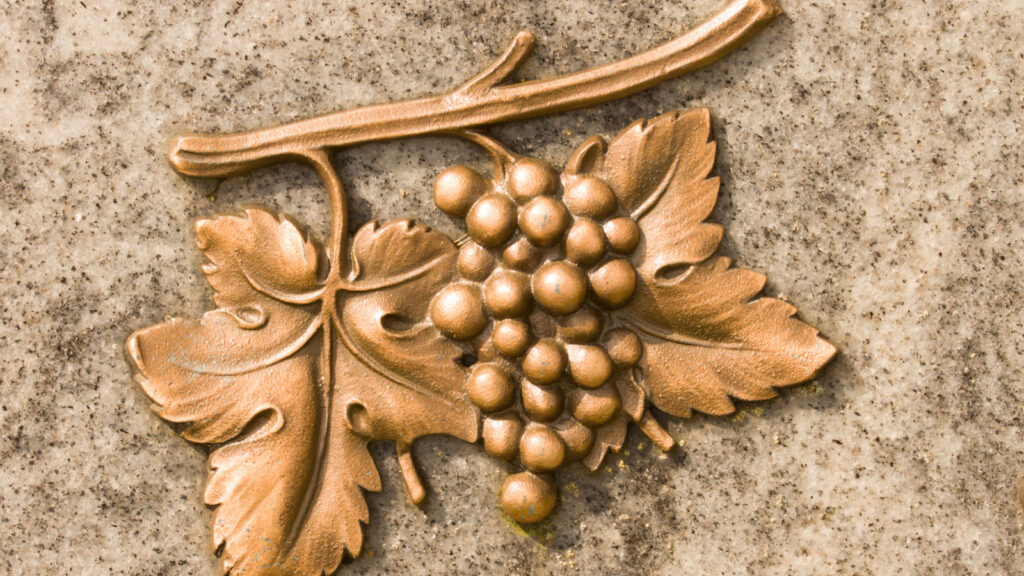
Grapes, and often the vine from which they grow, represent the blood of Christ in Christian symbolism, particularly in relation to the Eucharist. This imagery is drawn from Jesus’ words at the Last Supper, where wine, symbolized by grapes, was presented as his blood, thus embodying sacrifice, communion, and the covenant between God and humanity.
The Shell: Depicting Baptism and Spiritual Cleansing
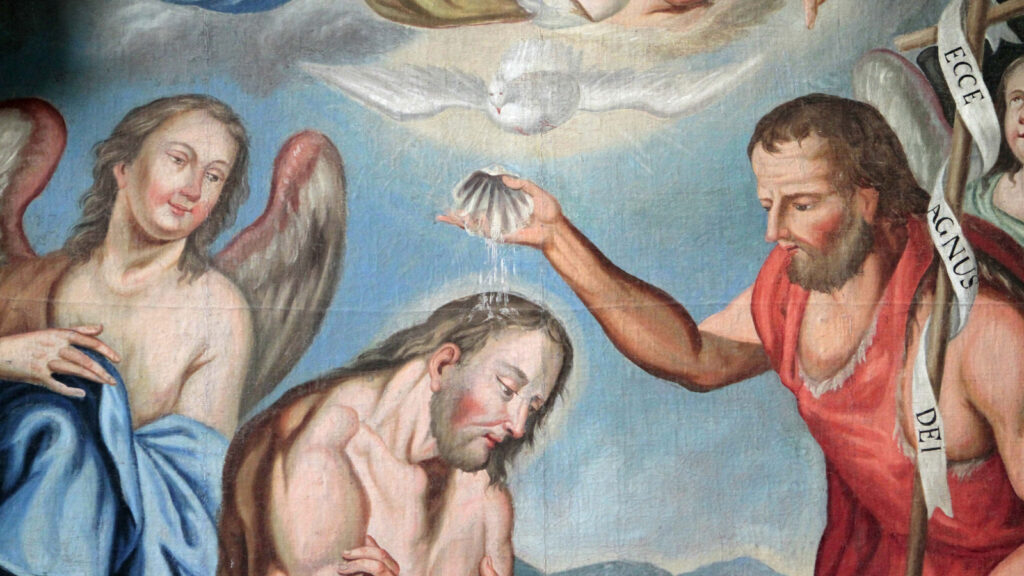
Often seen in art featuring John the Baptist, the shell symbolizes baptism. Using the shell, from which water is poured, signifies cleansing, rebirth, and initiation into the Christian faith. This symbol reflects the transformative power of baptism as a key ritual in Christian practice, signifying the washing away of the old and the birth of a new life in faith.
The Crown: Dual Symbol of Christ’s Royalty and Believers’ Victory
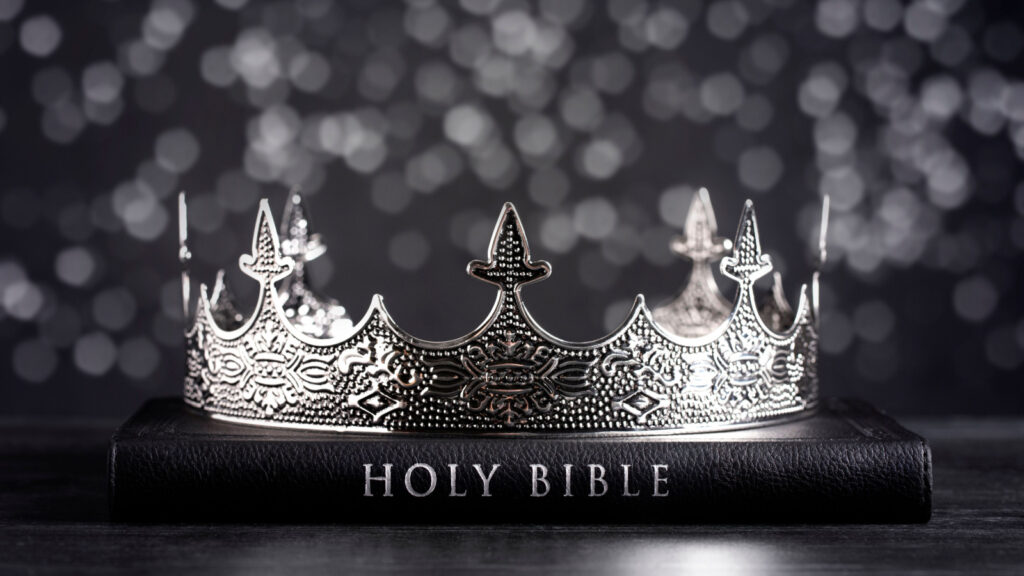
Common in Christian art, the crown serves as a dual symbol: it signifies both the kingship of Christ and the eternal reward promised to the faithful. The crown represents Christ’s sovereignty and his triumph over death while symbolizing the ultimate victory and glory awaiting believers in the afterlife.
The Keys: Authority and the Promise of Heaven
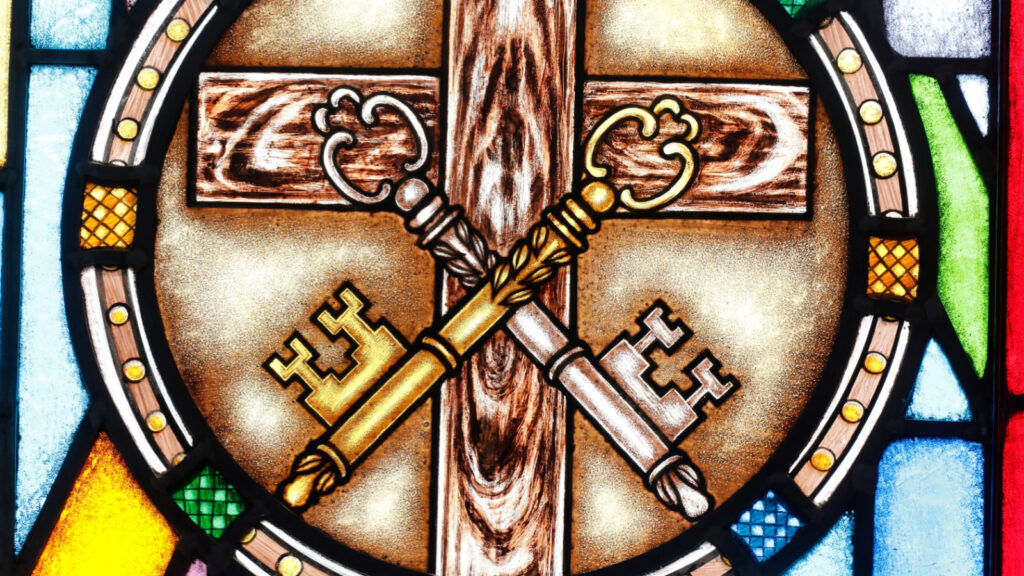
The keys are a traditional Christian symbol representing the authority to grant access to the Kingdom of Heaven. Often associated with Saint Peter, who, according to tradition, received the keys from Christ, this symbol underscores the belief in the Church’s role in mediating salvation and the promise of eternal life.
The IHS Monogram: A Christogram of Jesus’ Name
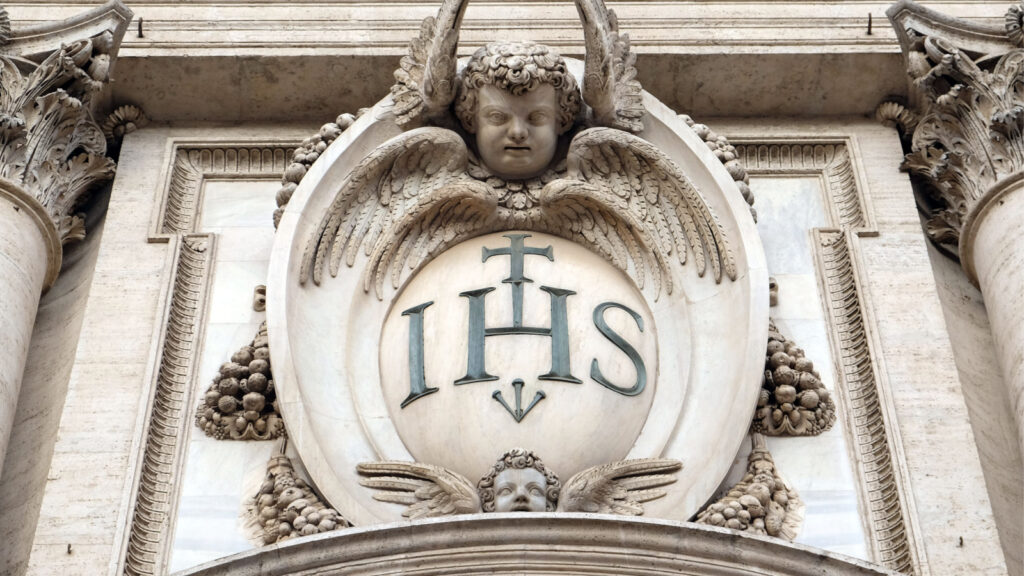
The IHS monogram is derived from the first three letters of “Jesus” in Greek (ΙΗΣΟΥΣ). This Christogram has been widely used in Christian art and literature, serving as a shorthand representation of Jesus Christ. Its prevalence in religious artifacts and inscriptions reflects its importance as a symbol of devotion and recognition of Jesus’ central role in the Christian faith.
The Seven-Branch Menorah: A Link Between Creation and Divine Illumination
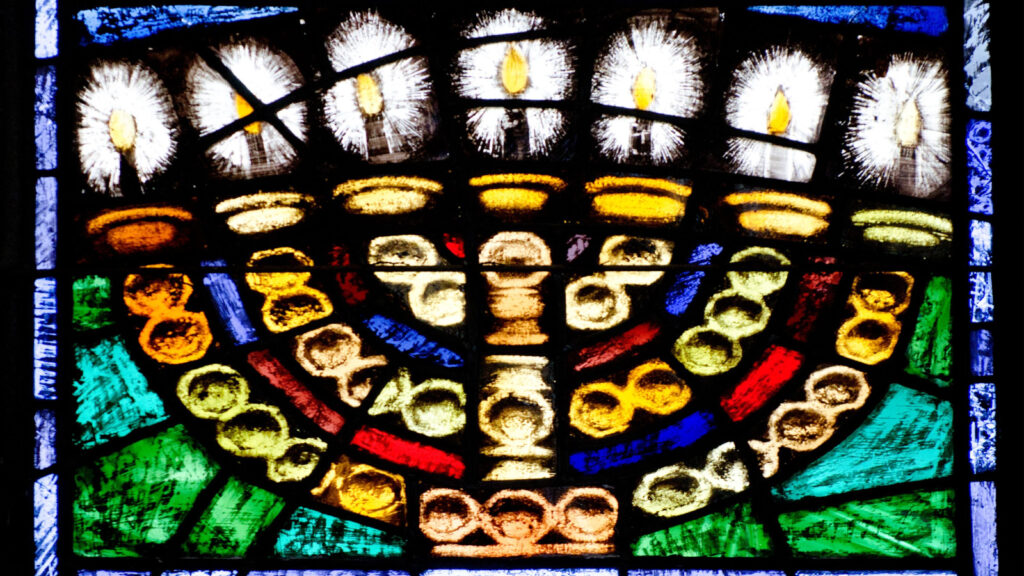
The Seven-Branch Menorah, adopted from Jewish tradition, holds significant meaning in Christianity. It symbolizes the seven days of creation, representing God’s order and divine intervention in creating the universe. Furthermore, it embodies God’s enduring presence and divine light in the world, signifying guidance, wisdom, and enlightenment.
The Star: Guiding Light to the Birth of Christ

The star, especially prominent during Christmas, symbolizes the Star of Bethlehem that guided the Magi to the newborn Jesus. It represents divine guidance, revelation, and the light leading to Christ. This celestial symbol commemorates the momentous event of Jesus’ birth, marking the beginning of the Christian narrative.
The Palm Branch: Triumph and Martyrdom

Palm branches are intricately linked with Christian symbolism. On Palm Sunday, they recall Jesus’ triumphant entry into Jerusalem, symbolizing victory, peace, and eternal life. Furthermore, the palm branch symbolizes martyrdom, representing the ultimate victory of faith and spirit over physical death, honoring those who have sacrificed their lives for their faith.
The Ark: A Refuge and Symbol of God’s Covenant
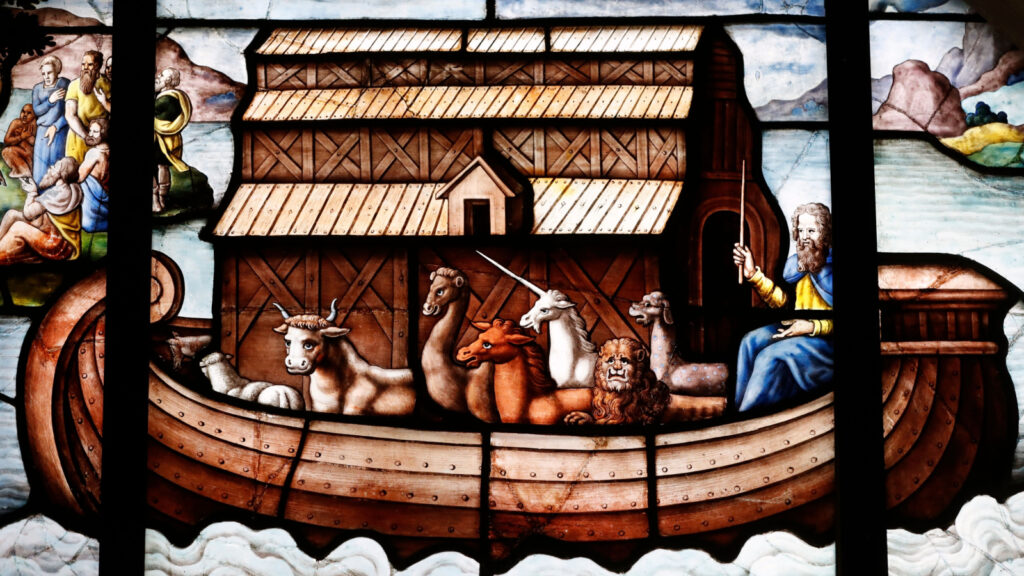
The Ark, representing Noah’s Ark, is a powerful symbol of God’s protection and covenant with humanity. It embodies safety, salvation, and the promise of a new beginning. The Ark’s story is a testament to God’s mercy and faithfulness, reminding believers of His promise to preserve and care for those who remain faithful.
The Rainbow: A Divine Promise and Symbol of Hope

The rainbow, appearing after the Great Flood, is a vivid symbol of God’s covenant and promise never to flood the earth again. This colorful natural phenomenon represents hope, renewal, and the faithfulness of God’s promises. It serves as a reminder of the enduring relationship between God and humanity.
The Ladder: Bridging the Earthly and the Divine
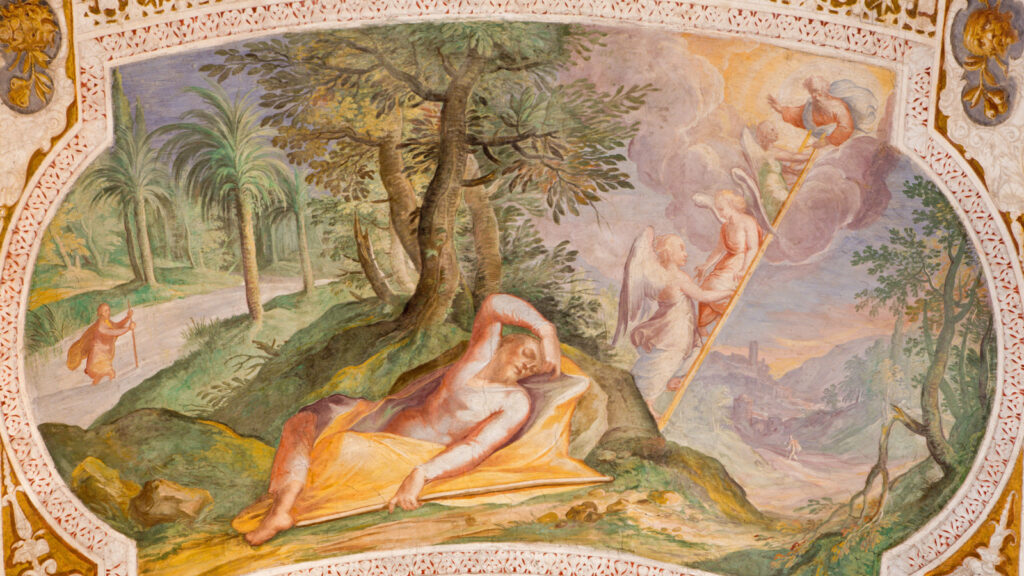
The ladder, as seen in Jacob’s dream in Genesis 28:12, symbolizes the connection between heaven and earth, between God and humanity. It represents spiritual ascent, revelation, and the possibility of direct communication with the divine. This symbol encourages belief in God’s accessibility and the potential for divine intervention in the human realm.
The Chalice: Commemorating the Last Supper and Christ’s Sacrifice
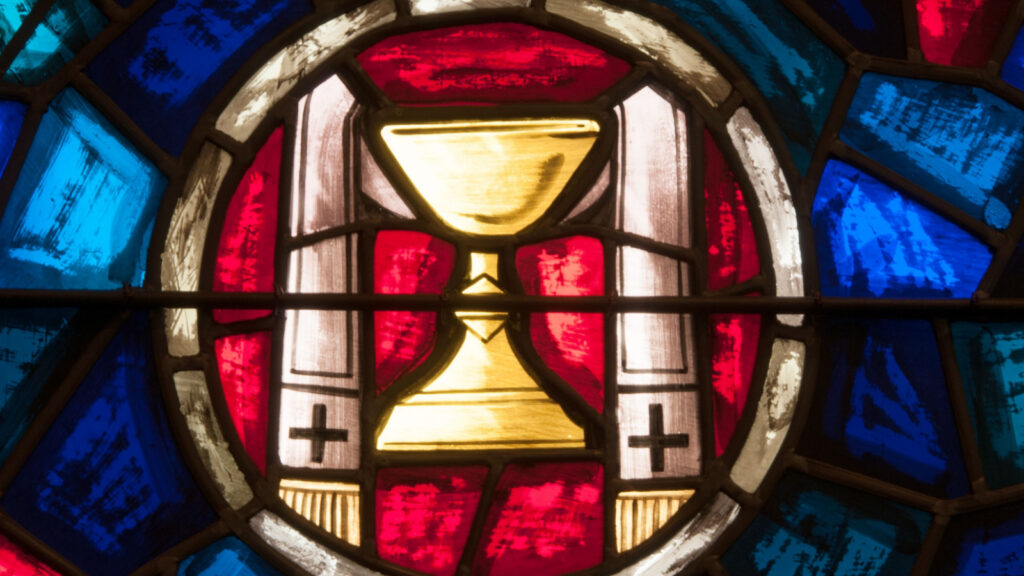
The chalice, often associated with the Eucharist, symbolizes the Last Supper and the blood of Christ. It holds deep significance in Christian liturgy, representing the new covenant between God and humanity through the sacrifice of Jesus. The chalice is a poignant reminder of Jesus’ suffering, his act of salvation, and the promise of redemption for believers.
The Olive Tree: Symbol of Peace, Fertility, and Divine Covenant
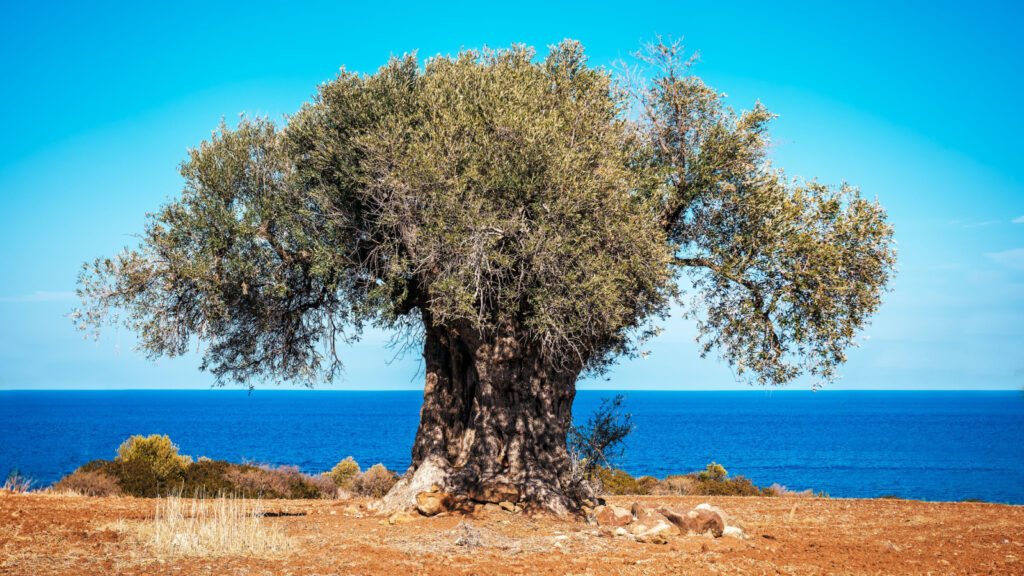
The olive tree, a recurring symbol in the Bible, embodies peace, fertility, and prosperity. It has also been traditionally seen as a representation of the relationship between God and Israel. The olive branch, in particular, is a sign of peace and reconciliation. This symbolism is rooted in the story of Noah’s Ark, where a dove returns with an olive branch, signifying the end of God’s wrath and the beginning of a new covenant with humanity.
The Beehive: Emblem of Harmonious Community and Industriousness
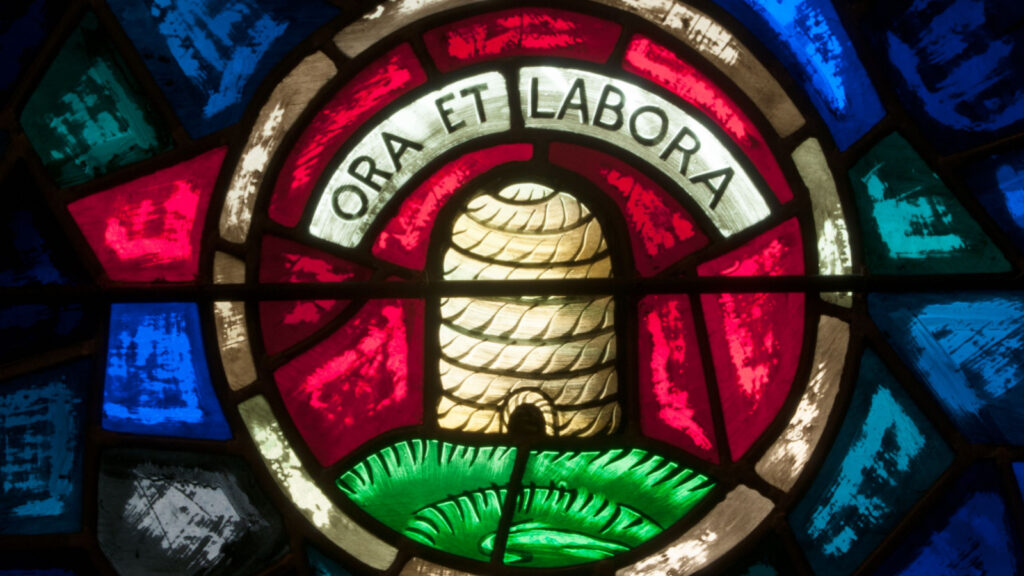
Although less common, the beehive is a rich metaphor in Christian symbolism. It represents the Christian community, characterized by unity, cooperation, and industriousness. The beehive also symbolizes the idea of working diligently for the greater good and the promise of eternal reward for faithfulness and hard work. This symbol encourages the values of communal support and shared effort in the Christian life.
The Scallop Shell: Icon of Pilgrimage and Spiritual Journey
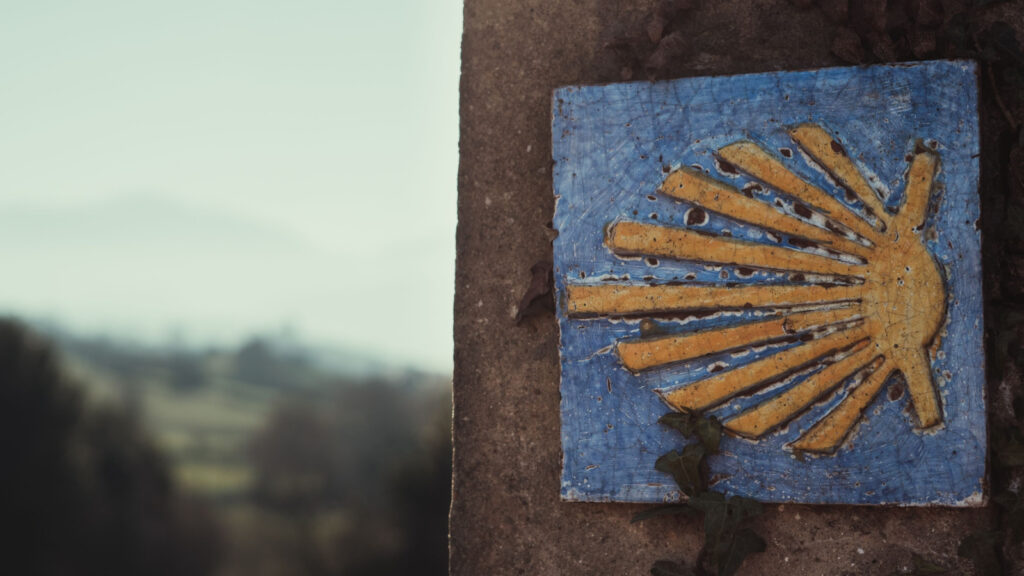
The scallop shell is closely associated with the pilgrimage to Santiago de Compostela, one of the most important pilgrimages in Christianity. It signifies not only the pilgrims’ physical journey but also their spiritual quest for growth and enlightenment. The shell, often used to scoop water for baptism, also represents purification and rebirth, echoing the transformative nature of pilgrimage and baptism.
The Knot: Complex Symbol of Faith, Love, and Unity
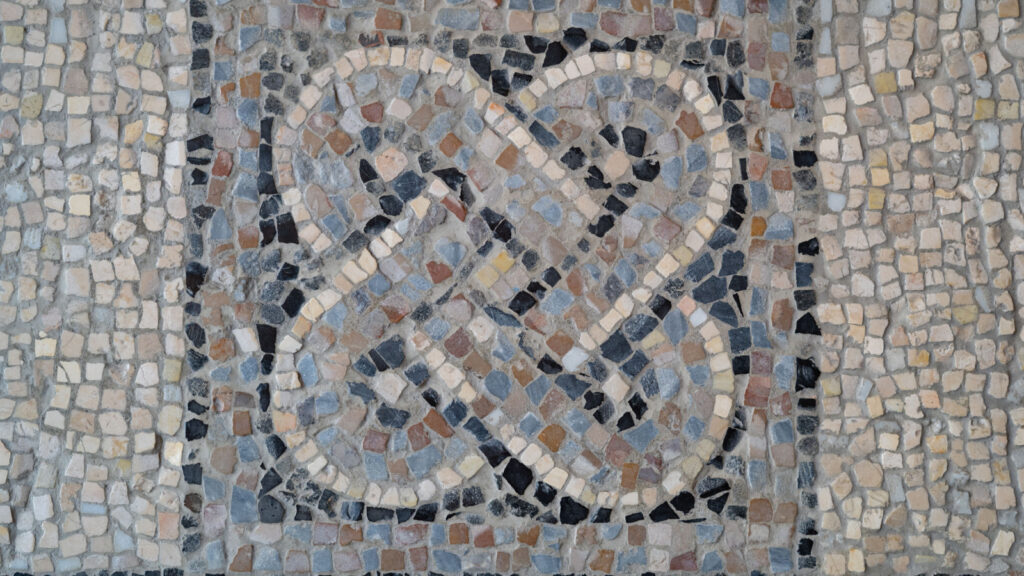
While not as widely recognized, the knot, particularly Solomon’s Knot, is a meaningful symbol in Christian art. It represents the interweaving of faith and love and the interconnectedness of human and divine relations. The knot’s endless path can also symbolize eternity and the unbreakable bonds of love and faith that bind the Christian community together.
The Mandorla: A Heavenly Union of the Divine and the Earthly
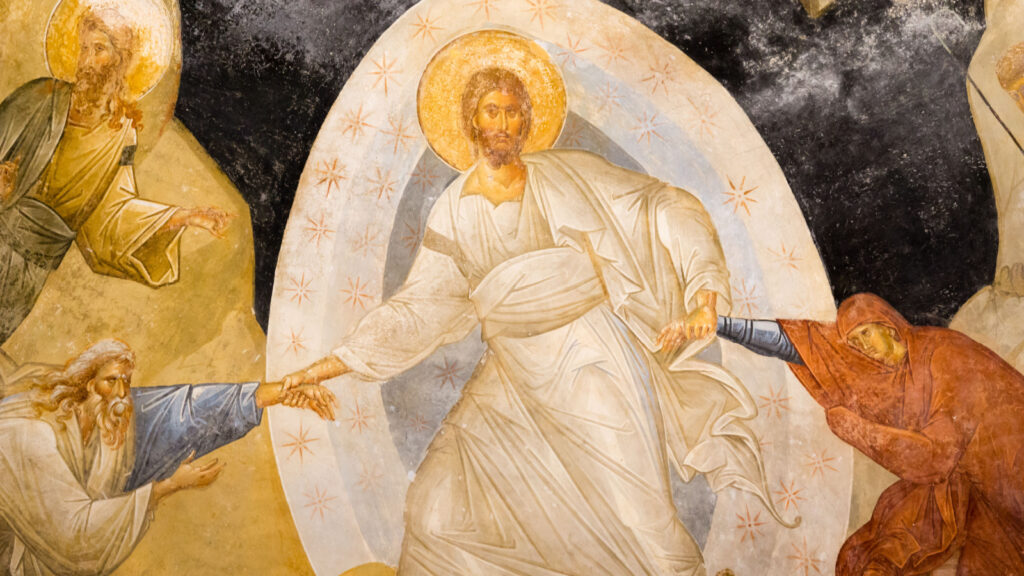
The mandorla, an almond-shaped aureole often seen surrounding figures like Christ or the Virgin Mary in religious art, symbolizes the intersection of heaven and earth. It represents the holy and the divine coming into the earthly realm. This symbol is particularly significant in depicting the dual nature of Christ, both human and divine, and the Virgin Mary, who bridges the divine and human worlds through her role in the Incarnation. The mandorla is a visual representation of these figures’ mystical and transcendent aspects.
